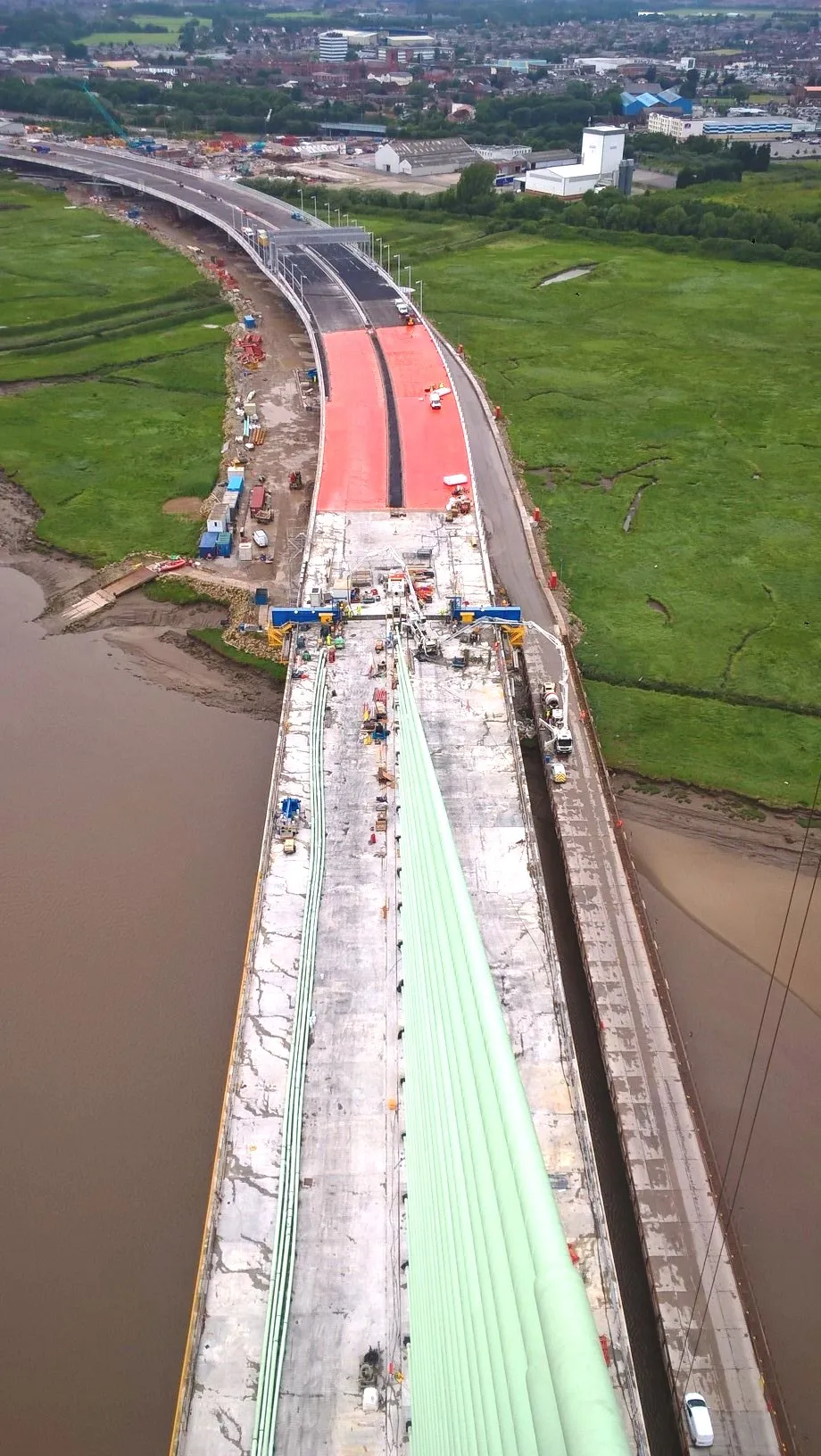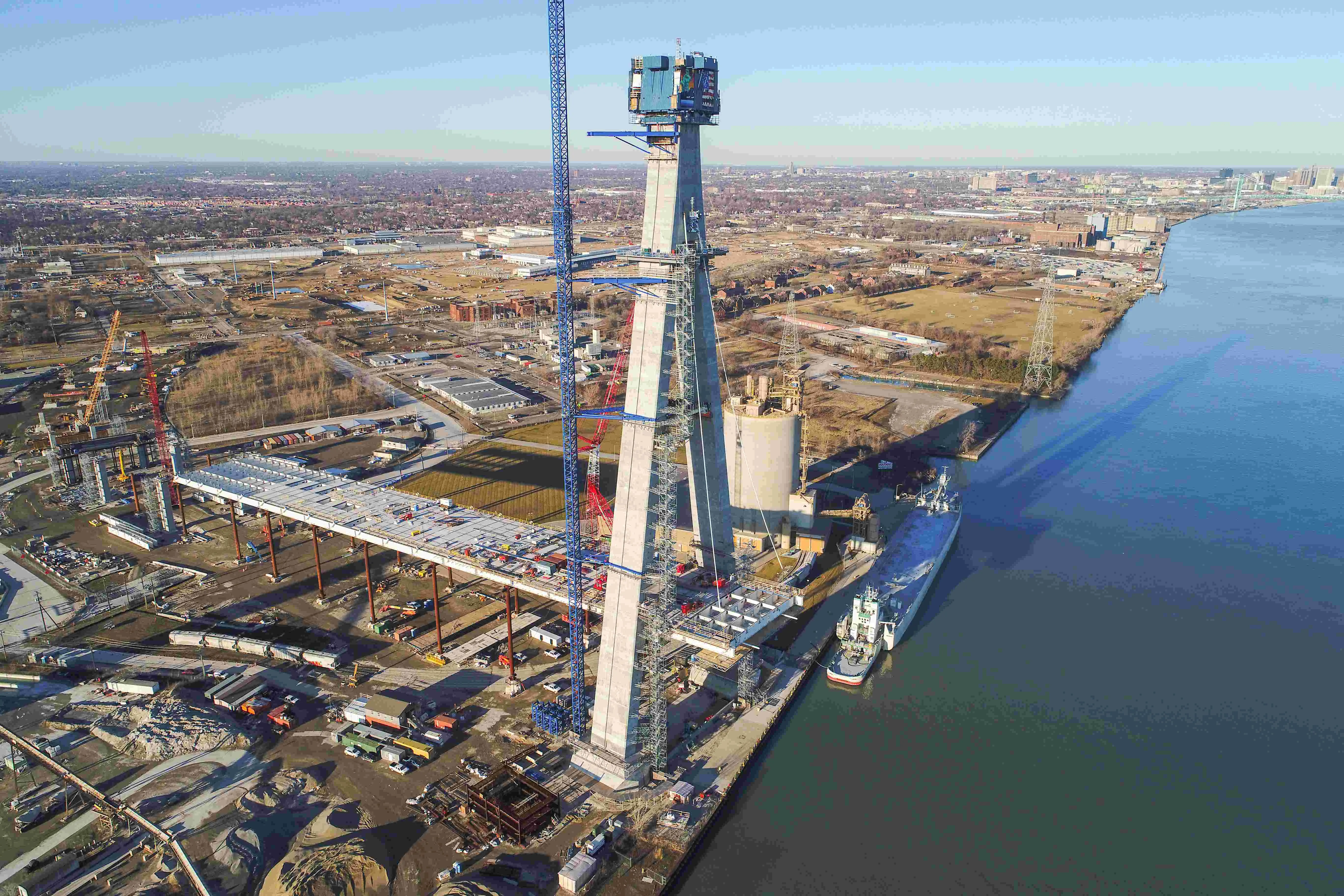
The Mersey Gateway bridge project near Liverpool in England passed a milestone recently with the first joining of two of the deck sections.
The key segments, as the sections are called, link the north approach viaduct to the north pylon deck span and are the first of four deck-joins scheduled for this summer. In total, there are five sections of bridge deck and approach roads that need to be joined.
Under construction is a six-lane cable-stayed structure with three towers that will span the Mersey River’s expansive mud flats between the towns of Runcorn and Widnes near Liverpool.
Including the approach viaducts on each side, the project will be 2.3km long with a river span of 1km. The main bridge deck will be reinforced concrete. The 80m-high central tower will be shorter than the two outer towers, where the north tower will be 110m high and the south tower will reach 125m.
The deck is being built outwards from each of the three pylons at a rate of around 6m a week.
As well as being linked to each other, the north and south main bridge deck sections also need to be linked to the approach roads – the viaducts built over the saltmarsh and the canals – approaching the river.
“We have now linked the sections of deck together by bridging the gap between the two decks with four steel restraint struts that resemble giant bolts and a concrete pour,” said Hugh O’Connor, general manager of Merseylink, the consortium building the bridge.
“Once the concrete has set, the decks are further locked together with external post-tensioned tendons. This is a major step for the project and we remain on target to complete the final three joins this summer with the bridge expected to open to traffic this autumn.”
It took around two hours to pour 40m³ of concrete to fill the 2m gap between the north approach viaduct and north pylon deck span.
“We could complete the pour only once the form traveller was moved into position and the mould had set. The gap between sections was only two metres wide, but runs the entire 32 metres width of the bridge deck,” said O’Connor. “Around 18 hours after the pour, the concrete sets to full load-bearing strength.”
Merseylink Consortium was appointed by Halton Borough Council to a 30-year design, build, finance and operate contract. Equity partners are









